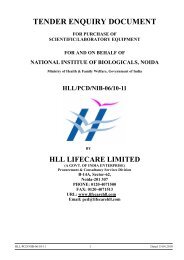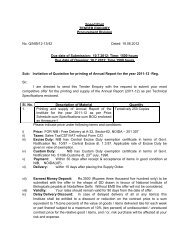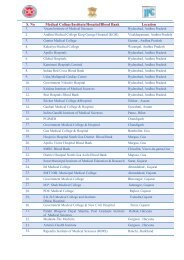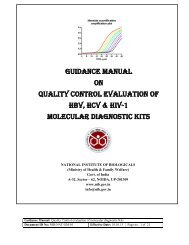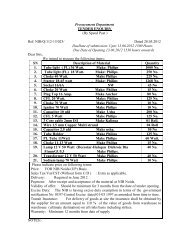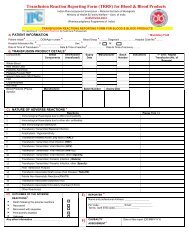Box 3
Box 3
Box 3
- No tags were found...
Create successful ePaper yourself
Turn your PDF publications into a flip-book with our unique Google optimized e-Paper software.
Insulin Lispro<br />
C 257 H 383 N 65 O 77 S 6 Mol. Wt. 5808<br />
28 B -L-Lysine-29 B -L-proline insulin (human)<br />
Insulin Lispro is a 2-chain peptide containing 51 amino acids. The A- chain is composed of 21<br />
amino acids and the B- chain is composed of 30 amino acids. It is identical in primary structure<br />
to human insulin, only differing in amino acid sequence at positions 28 and 29 of the B- chain.<br />
Human insulin is Pro (B28), Lys (B29), whereas insulin Lispro is Lys (B28), Pro (B29). As in<br />
human insulin, insulin Lispro contains 2 interchain disulfide bonds and 1 intrachain disulfide<br />
bond.<br />
Insulin Lispro is produced by a method based on recombinant DNA (r-DNA) technology. The<br />
potency is not less than 27.0 Insulin Lispro units per mg calculated on the dried basis.<br />
Prior to release, the following tests are carried out on each batch of the final substances.<br />
Residual DNA<br />
The limit is as prescribed by competent authority.<br />
Host cell-derived protein<br />
The limit is not more than 10 ppm.<br />
Single-chain precursor<br />
The limit is not more than 10 ppm. Use a suitably sensitive method.<br />
The content of insulin Lispro is 94.0% to 104.0% of insulin Lispro (dried substance)<br />
C 257 H 383 N 65 O 77 S 6 . By convention, for the purpose of labeling insulin lispro preparations,<br />
0.0347mg insulin lispro is equivalent to 1 unit of insulin lispro.<br />
Category<br />
Hypoglycemia<br />
Submission from NIB 1
FOREWORD<br />
Timely and accurate diagnosis is critical to the global efforts to prevent and treat<br />
infectious diseases. And yet, those on the front lines of this battle struggle to make do with<br />
inadequate and antiquated testing technology.<br />
Immunodiagnostic tests, or immunoassays used for diagnostics, have been used<br />
extensively in any scientific disciplines and in many different ways. Such tests encompass any<br />
analytical method which uses antibodies as reagents, the results from which assist a diagnostic<br />
interpretation. The format of these tests has been equally varied; covering simple manual methods<br />
monitored by radioisotopes or enzymes; fully automated systems with integrated sophisticated<br />
detection; immunosensors; and 'dip-stick' tests<br />
The Immuno diagnostic Kit laboratory is notified as Central Drugs Laboratory (CDL) by<br />
Government of India vide Gazette No. 158, dated 27 th August 2002 for in-vitro diagnostic devices<br />
for HIV, HCV and HBsAg. The laboratory has a Quality Management System in place and is<br />
NABL Accredited in accordance with the standard ISO/IEC 17025; 2005 in the field of biological<br />
testing. This ensures quality evaluation of diagnostic kits for safeguarding public health in the<br />
country.<br />
Guidance Manual: Quality Control of HBs Ag Immunodiagnostic Kits<br />
Document ID No: NIB/IDKL/GM/03 Effective Date: 08.04.13 Page no. 3 of 37



